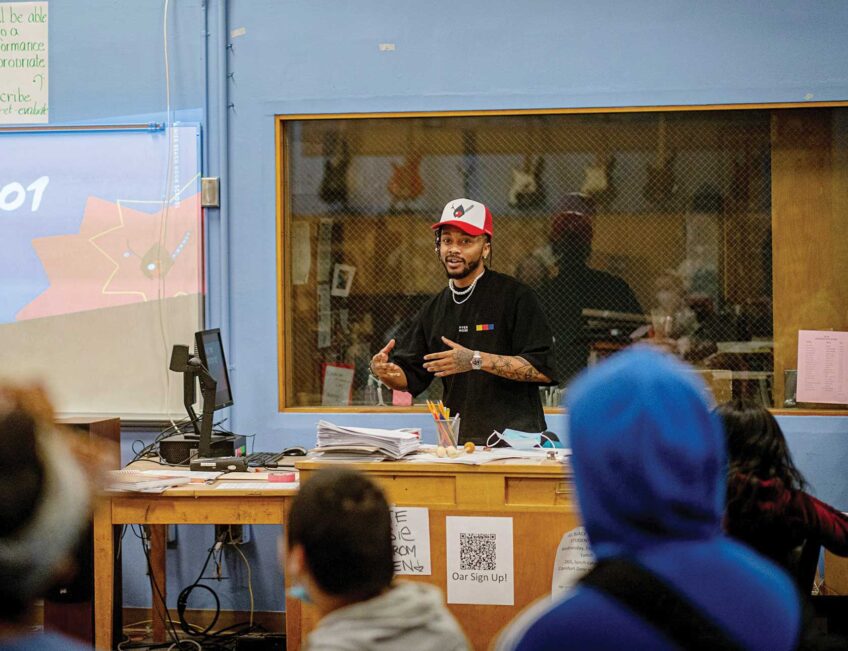Child safety report highlights danger, recommendations around water safety for children with autism

For kids with autism, the risk of drowning is 160 times higher than their neurotypical peers.
Those concerns, along with recommendations for how to address that gap, were highlighted in a new report from the Massachusetts Office of the Child Advocate, released April 24.
The report, the OCR’s annual child fatality review, details deaths of infants younger than a year old and children between one- and 17-years-old. The latest edition featured data from 2022.
The concern around drowning results from a documented occurrence where children with autism spectrum disorder tend to be more attracted to water.
According to a 2019 study published in Clinical Medical Insights: Pediatrics, accidental drowning when children with autism wander or run away from a caregiver or secure area — referred to as elopement — accounted for 91% of deaths among children with autism.
A 2012 paper in the journal Pediatrics found that nearly half of families with children with autism reported that their kid eloped at least once after the age of 4.
Cynthia Laine, founder of the Black Autism Coalition, a Fitchburg-based nonprofit, said the report reflected concerns that she and others in the community have had for a long time.
“It shows finding, things that that we have been advocating and saying for years,” Laine said. “There’s a system that was meant to support our vulnerable children which often fails them.”
That gap, she said, is especially true for children with disabilities and even more so for kids who are Black and brown.
For kids with autism, part of that disparity stems from a tough-to-navigate landscape of services. While many supports for parents exist in Massachusetts, accessing them can be tough, or they’re not shared with parents and caregivers.
“When we get a diagnosis, there’s not really a lot of resources as far as ‘These are the things that you should do,’ … ‘This is a location that you go,’” Laine said.
For parents who are trying to monitor their children around the clock and also pursue support, finding the time can be a challenge, said Bekah Thomas, a senior policy manager at the Office of the Child Advocate, who worked to prepare the report.
“They’re providing 24/7 vigilance for their children who have wandering behaviors to make sure that their children are staying safe,” Thomas said. “If you think about that context — in addition to combing through websites of information, trying to figure out your insurance coverage, trying to figure out if there are other financial benefits that you qualify for — it’s very time-consuming and exhausting.”
For example, Laine, who has two children with autism spectrum disorder, has had her kids wear a watch that can track them in case they elope, but it was a tool she started using on the recommendation of another parent, not a professional.
“My son used to elope, and he has a watch,” Laine said. “God forbid something were to happen. I can locate him, but my findings for this watch were due to me connecting with other parents. It wasn’t like a resource that was out there, given to me.”
And that struggle can be augmented by cultural or linguistic factors. A 2023 study in Current Psychiatry Reports identified factors including language barriers, limited training in cultural responsiveness and a lack of trust in providers to hinder support for families with autistic children.
“Are these resources translated into languages that they are able to understand as well?” Laine said. “There’s all those parts of it too.”
Addressing those concerns, Thomas said, is about implementing layered protections.
Those protections might include things like building the awareness and skills of caregivers, implementing home modifications or things like tracking technology to keep kids safe, and developing robust emergency plans as well as keeping in contact with local emergency responders so they know.
“Any one of these tactics or recommendations that are in the report, they in and of themselves are not sufficient to keep a child safe,” Thomas said. “It’s really about building those layers of prevention so that if one layer fails, the next one is there to pick it up.”
The report lists a pageful of recommendations, including education for caregivers, providing support for home modifications that will prevent elopement and increased training for first responders — a step Laine said she thought would be helpful.
“I think mandatory and ongoing training is necessary for all people, as far as educators, the police, clinicians — anybody that is in the front line on [working with] neurodiversity,” Laine said.
Already, there is some training, but the extent to which it is used across the state can vary, Thomas said.
“We have phenomenal emergency responders across the commonwealth, but there’s a difference in how they respond from one community to another,” she said.
Not all communities, according to Thomas, have taken training around autism response, which can look different than how emergency responders should respond to other situations.
For an autism response, Thomas said, emergency responders are recommended to look at bodies of water first and need to know that calling out a child’s name might not be the most effective approach, and if they do, the child may not call back.
And both Thomas and Laine wanted parents and caregivers to know that they’re not alone.
“24/7 vigilance over water and behavior is so time-consuming,” Thomas said. “There’s so many joys that come with parenting, especially parenting a child with autism, and this piece needs extra support.”
Laine encouraged parents to build their network, know their rights and continue to advocate for their kids.
The increased concern for children with autism spectrum disorder comes as part of a handful of disparities the report identified around child fatalities in the state, including for boys, Black children, and children in urban centers.
According to the report, Black children aged 1 to 17 faced a fatality rate of 33.1 deaths per 100,000; the fatality rate for white children was 10.6 per 100,000. And the rate of boys dying was almost 1.5 times that of their female peers.
Overall, the report identified congenital malformations, unintentional injuries, and low birth weight as the leading causes of death for children in the state.
The report also identified a rise in child fatalities generally. In 2022, the fatality rate for children from birth through 17 years old in Massachusetts was 29.5 deaths per 100,000 people. In 2021 and 2020, it was 29.1 per 100,000 and 28.1 per 100,000, respectively.
What led to that rise is currently undetermined. The Office of the Child Advocate doesn’t have a clear picture of why the numbers went up, Thomas said.
But the report, she said, isn’t intended to tie the concerns around children with autism spectrum disorder to that rise. Currently, any connection between the two would be hard to draw, as data around child fatalities often doesn’t include any record of whether the child had autism spectrum disorder or if it is believed to play a role in the death.
“How can we tell whether or not we’re moving the needle in terms of prevention if we’re not capturing the data?” Thomas said.







